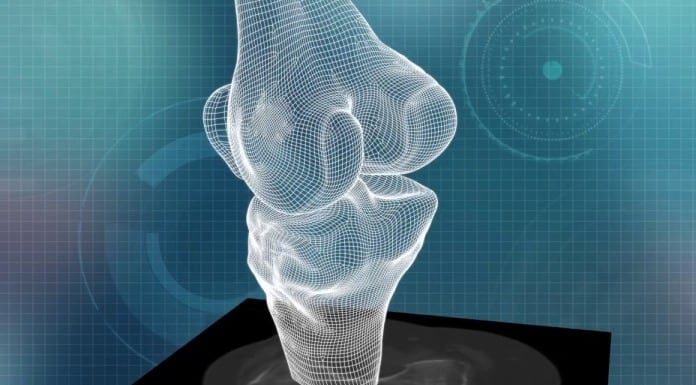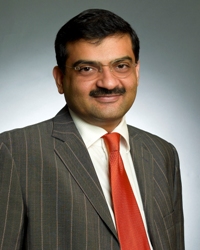According to the Singapore Ministry of Health, the number of knee and hip replacement surgeries in the country totaled 2,641 and 647, respectively, for the period December 2012 to November 2013. With an increasingly aging society, the number of hip fractures in Singapore is expected to increase to 9,000 in 2050 from 1,300 in 19981.
Article By – Rajiv Ghatikar, Vice President & General Manager, ASEAN / Australasia Siemens PLM Software
Siemens PLM Software is a business unit of the Siemens Industry Automation Division, a business unit of the Siemens Industry Automation Division, and a leading global provider of product lifecycle management (PLM) software & services with 6.7 million licensed seats and 69,500 customers worldwide. Headquartered in Plano, Texas, Siemens PLM Software works collaboratively with companies to deliver open solutions that help them turn more ideas into successful products.
Statistically, on an average, about nine joint replacement surgeries took place each day in Singapore in 2013. This number is expected to rise steadily in the years to come. This heralds a foreseeable strain on the healthcare system.
To ensure that the quality of life is not compromised, prosthesis needs to be provided in the shortest time possible and to the closest accuracy to each patient’s body. This is now possible with an increasingly automated production of custom-made prosthetic devices.
High pressures on the system
According to the American Academy of Orthopedic Surgeons, about 10 percent of joint replacement surgeries in America fail and require revision surgery.2. Accuracy is crucial to the success of joint replacement surgery. A prosthesis that does not fit accurately into a joint runs the risk of dislocation or worse still, the body rejecting it.
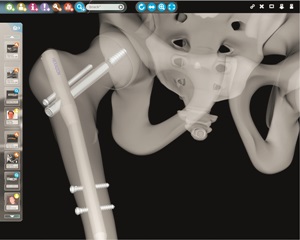
To achieve the right fit, surgeons utilize Magnetic Resonance (MR) or Computed Tomography (CT) scans to identify and differentiate between bone and soft tissue. Based on the scans, technicians then have to manually demarcate points along bone edges to achieve precise bone boundary delineation. The precise segmentation is crucial to enable theplan for the manufacture of a jig that best suits the patient.This is the most important, yet time and labor consuming stage that usually takes a few hours to complete before it even moves on to the actual production of the personalized jig.
With so many delicate details embedded in the processes, the healthcare system needs an end-to-end solution that is able to handle both the intricacies of prosthesis planning and manufacturing, and the speed at which they are produced.
Streamlining the process
Automated 3-D image segmentation
Instead of medical technicians spending hours on the drawing board demarcating where to cut along the bone, software applications are now able to replace this laborious task.
Trained on thousands of images annotated by experts, the software program learns to identify so-called “landmarks” – characteristics that are common to all examples of a target group. From an archive of patient scans, the system learns the model of each joint, internalizing the relationship between each image and its anatomical context.
The bone identification system automatically studies the scans and separates the bone from the soft tissue three dimensionally and produces all associated 3-D bone representations such as 3-D meshes right down to a granularity of about 0.5mm, all in under a minute.This not only saves time, but machines also improve on precision with each 3-D image segmentation.
Customized virtual surgical cutting guides
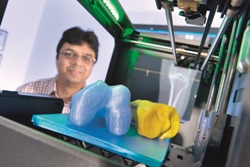
After image segmentation is done, the actual planning to production of prosthesis is another lengthy process. The slightest error will result in a prosthesis not closely fitted to the patient’s need, and could hugely impact the patient’s quality of life. This can be avoided by first simulating and optimizing everything in the virtual world to avoid possibility of errors on the operating table.
Custom surgical guides, or 3-D jigs, are now available for use by surgeons to prepare a bone for prosthesis. The jig can include holes for the precise positioning and angulation of screws, optimizing the installation of a prosthesis. Surgical plans are produced and reviewed by surgeons along the way before manufacturing instructions are sent for the production of the jig. Once surgeons and the machine are familiar with the program, the surgical cutting guides can be produced automatically from start to end.
Getting the right template for the custom jig is a key step of this process. Siemens’ NX, a computer aided design, manufacturing and engineering analysis (CAD/CAM/CAE) software application from Siemens PLM Software creates families of 3-D CAD models that are used as templates for these custom plastics jigs produced with additive manufacturing as well as metal implants typically produced with 5-axis computer-numerically-controlled machine tools.
NX is also able to bridge the gap between the template and actual production of the jig by automatically simulating associated machine tool paths in order to create the best match. The numerically-controlled program is then seamlessly transferred to a milling machine to achieve perfect surface quality while minimizing machining time.
The precision, speed and seamless integration of these applications have the potential to produce not only personalized jigs, but prosthesis devices as well.
Bringing it all together
With the optimization of processes of scans, surgical planning, patient-matched jig production and installation, the entire Image-to-Implant process of prosthesis is getting shorter, faster and richer in data. Coupled with the increased integration of medical imaging technology and advanced manufacturing, an end-to-end solution is connecting the dots with an “engineer-to-order” program commonly used in industrial production environments.
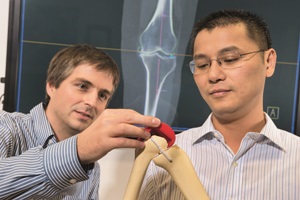 Team center offered by Siemens PLM Software, provides a unified platform for managing everything from a patient’s scans straight through to the eventual prosthesis. It manages where scans go to for image segmentation, to where that segmentation is stored, where surgical planning is conducted and filed, where the final patient-matched jig is kept, how and under what circumstances can the doctor log on and access patient files – becoming the interface between the digital world and the data required for manufacturing it.
Team center offered by Siemens PLM Software, provides a unified platform for managing everything from a patient’s scans straight through to the eventual prosthesis. It manages where scans go to for image segmentation, to where that segmentation is stored, where surgical planning is conducted and filed, where the final patient-matched jig is kept, how and under what circumstances can the doctor log on and access patient files – becoming the interface between the digital world and the data required for manufacturing it.
Team center is currently in use by many medical devices manufacturers and is helping to streamline the entire production life-cycle making it faster and more efficient. Furthermore, Team center is also set to facilitate in automating the entire process from imaging to personalized jig manufacturing as well as the eventual personalization of implants.
Taking the pressure off the system
Since 1990, Singapore’s life expectancy has risen from 77.6 to 84.5 for women and from 73.1 to 79.9 for men [3]. With people living longer, and with greater access to advanced healthcare technology, the demand for total joint replacement is bound to rise.
With the foreseeable strain that will be placed on the medical system in the years to come, a solution that is both accurate and quick is of critical importance. The automation of the process could help to reduce wait times and surgery failures, both of which will reduce pressures on the medical system in the years to come.
References:


 Team center offered by Siemens PLM Software, provides a unified platform for managing everything from a patient’s scans straight through to the eventual prosthesis. It manages where scans go to for image segmentation, to where that segmentation is stored, where surgical planning is conducted and filed, where the final patient-matched jig is kept, how and under what circumstances can the doctor log on and access patient files – becoming the interface between the digital world and the data required for manufacturing it.
Team center offered by Siemens PLM Software, provides a unified platform for managing everything from a patient’s scans straight through to the eventual prosthesis. It manages where scans go to for image segmentation, to where that segmentation is stored, where surgical planning is conducted and filed, where the final patient-matched jig is kept, how and under what circumstances can the doctor log on and access patient files – becoming the interface between the digital world and the data required for manufacturing it.

















